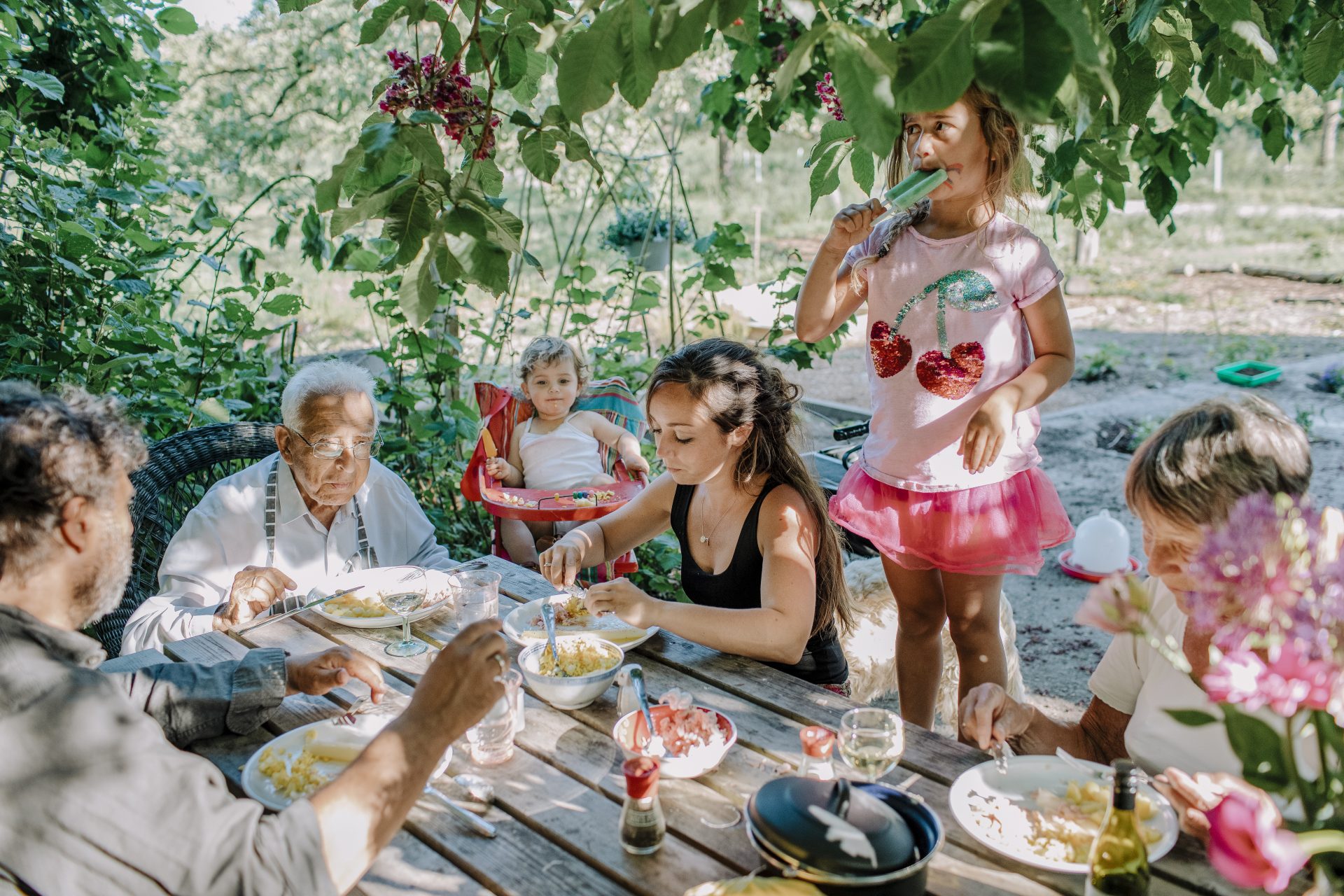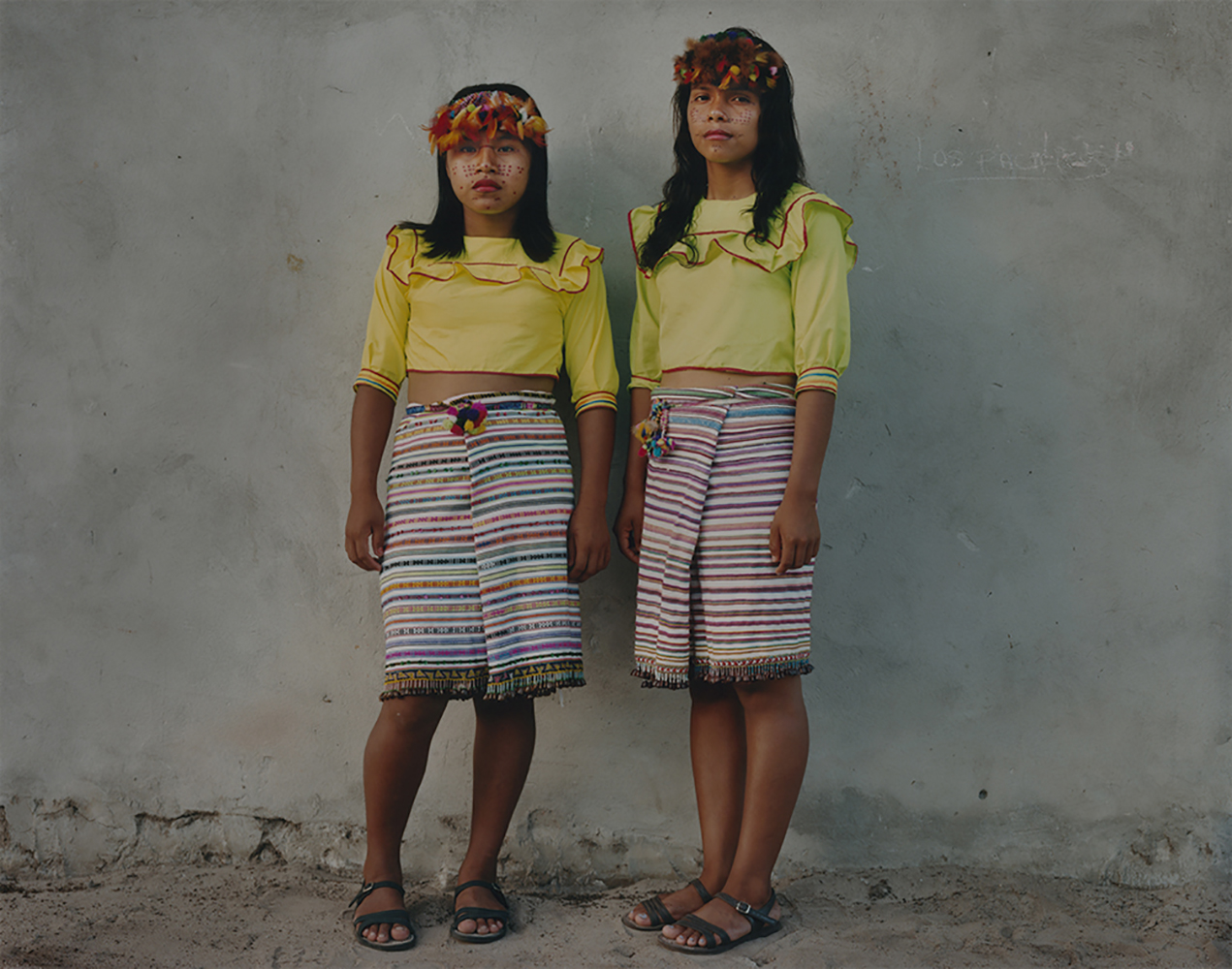
The word ‘narrative’ gets frequently mentioned in relation to photobooks, but few tell an actual story like Witch Hunt Vol. I: The Banished of Balsapuerto by Christo Geoghegan.
Imbuing investigative journalism with an anthropological sensibility, the book recounts the murders of fourteen healers in a remote region of Peru. Most of the attention is on the small city of Balsapuerto in the department (state) of Loreto, the largest one in the country but also the least populated. Geoghegan’s narrative in words and images explains how the motives behind these crimes epitomize a lack of understanding towards Amazonian indigenous communities. To this end, Witch Hunt skillfully combines the story’s disparate elements – religion, colonialism, corruption, and underdevelopment – so that a general audience can understand the events and connect with their devastating repercussions.
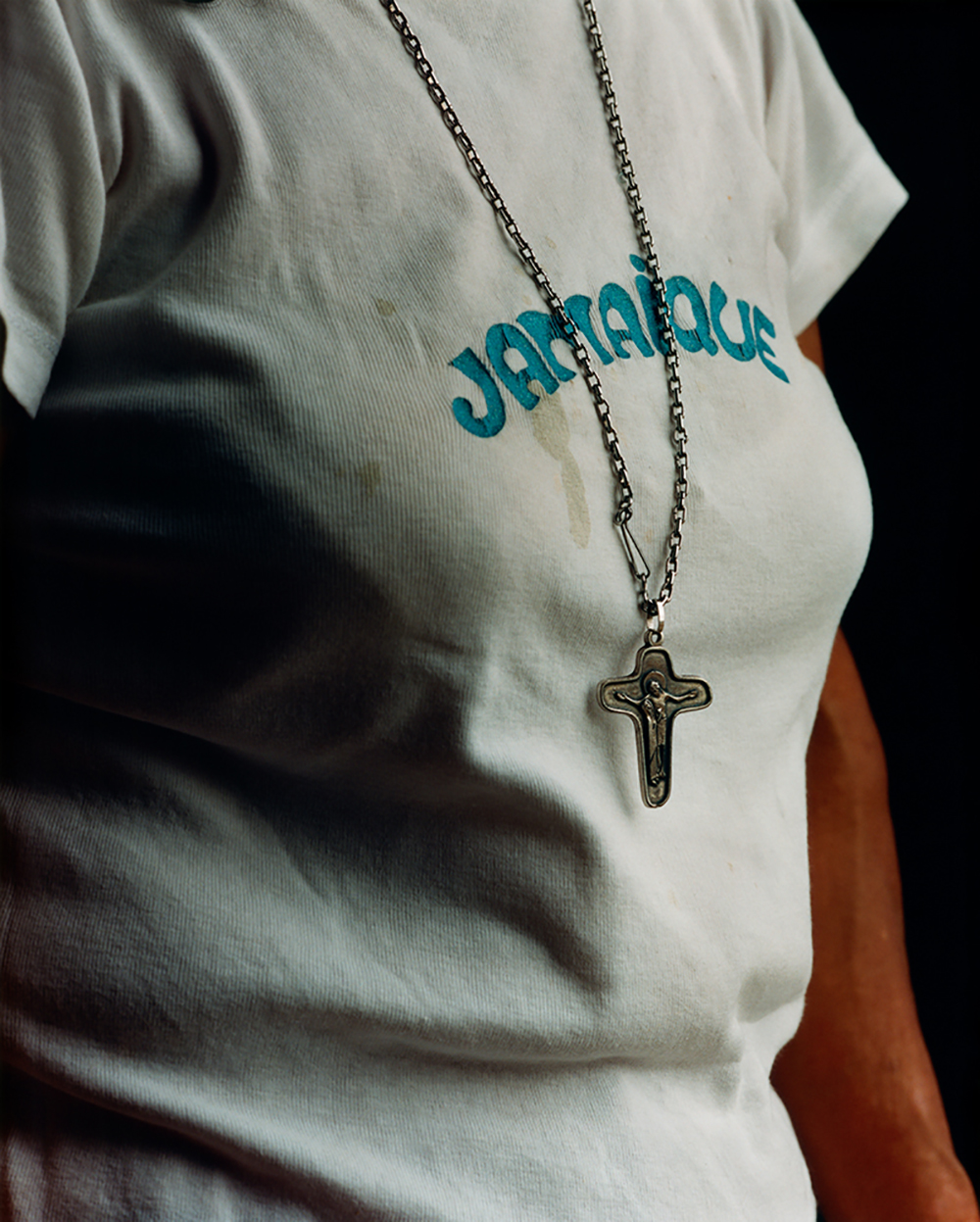
Geoghegan takes his time to explain the geography and culture in question. The most crucial distinction is between brujos (witches) and curanderos (healers), as well as the role some of them play as apus (community leaders). Many healers work in tandem with clinics in nearby cities, which in the challenging topography of the Amazon means hours away. In other words, the healers are sought out for their beliefs as much as for getting a semblance of primary healthcare that the government doesn’t provide. Their sui generis blending of traditional and Western medicine sometimes generates friction with those they serve. Moreover, the authority of the healers also conflicts with local politicians, who tend to abuse the lack of law enforcement to rule with an iron fist. Enmeshed in all of this is the role of belief in poor communities, with indigenous religions, Catholicism, and evangelical sects demanding contradictory behaviors from the population.
Witch Hunt is split into two sections housed in a cardboard cover. The main one narrates over six chapters the sociopolitical context of the murders and the tribulations surrounding the investigations. Each chapter opens with text, followed by an eclectic array of visual materials to communicate the facts more thoroughly, including Geoghegan’s photographs, maps, tables, archival pictures, and paintings by a local artist. The account is written in the first person, and the author’s transparency as a foreign narrator is welcomed, especially once concerns for his safety in the jungle become a part of the story. The book has been designed so that the pictures play second fiddle to a text packing a lot of information. As such, the photographs work autonomously from the text, but when their moment in the spotlight comes, they are granted enough space so that we can delve into them attentively. Still, the captions at the end of the book are crucial to understanding the content of each image, an arrangement that strikes the perfect balance between unmediated looking and the need for contextual information.
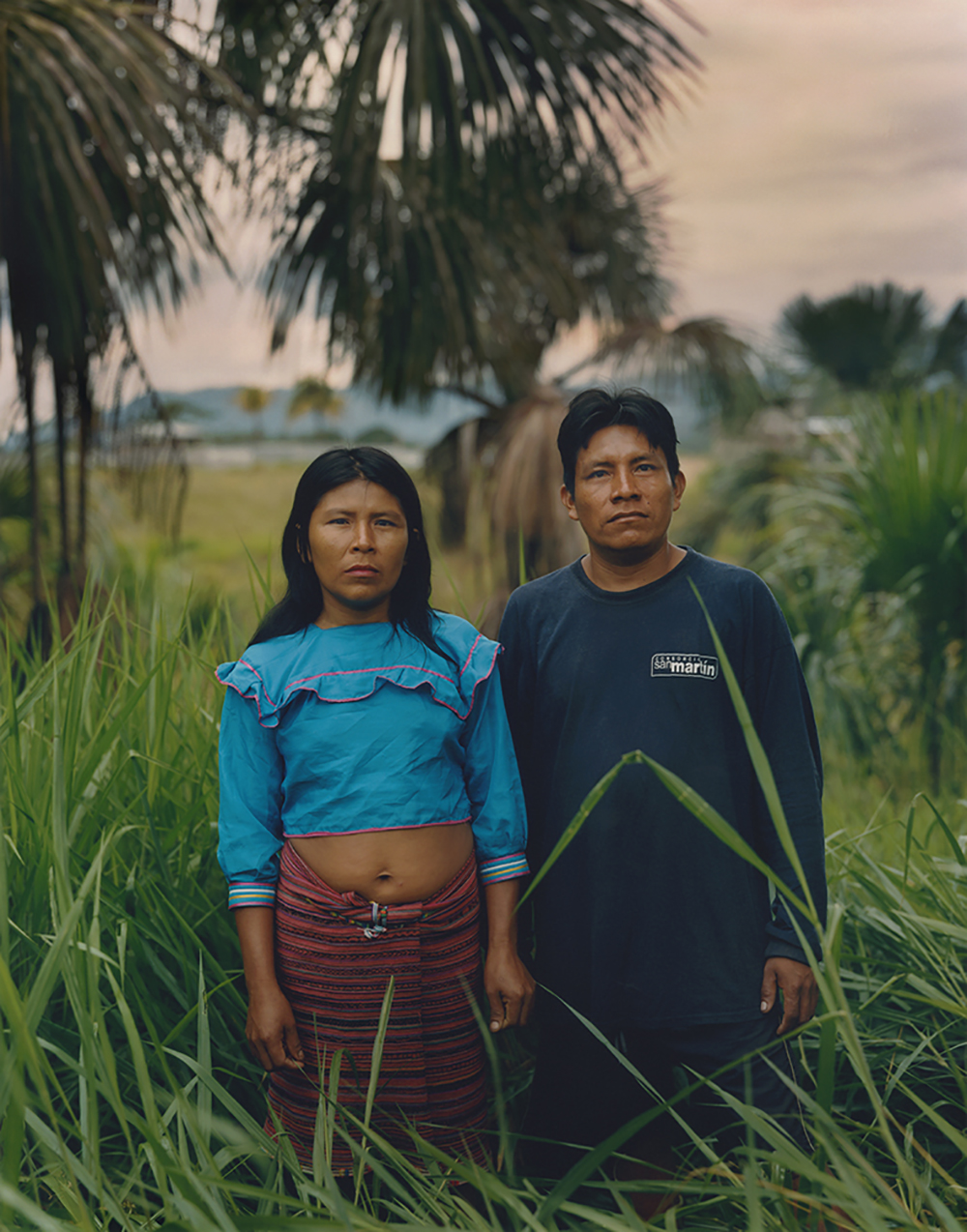
The paintings I mentioned above (see the video of the book at 01:18 and after) deserve a special mention, as they are an effective gateway into the cosmovision of the Shawi (who believe illnesses can be somatic as well as spiritual), helping us visualize the rituals through which the healers, aided by ayahuasca (a plant with high psychoactive properties), access another reality to make their diagnoses. These paintings not only incorporate a local sensibility but also free the photographs from performing a symbolic function, allowing them to be more neutral and seem more factual (a strategy reinforced by how most sitters look straight into the camera). This main section features paper inserts slightly wider than a bookmark interspersed throughout the chapters, showing screen grabs and newspaper clippings that distance the book from the sensationalism that dominated the press coverage of these events.
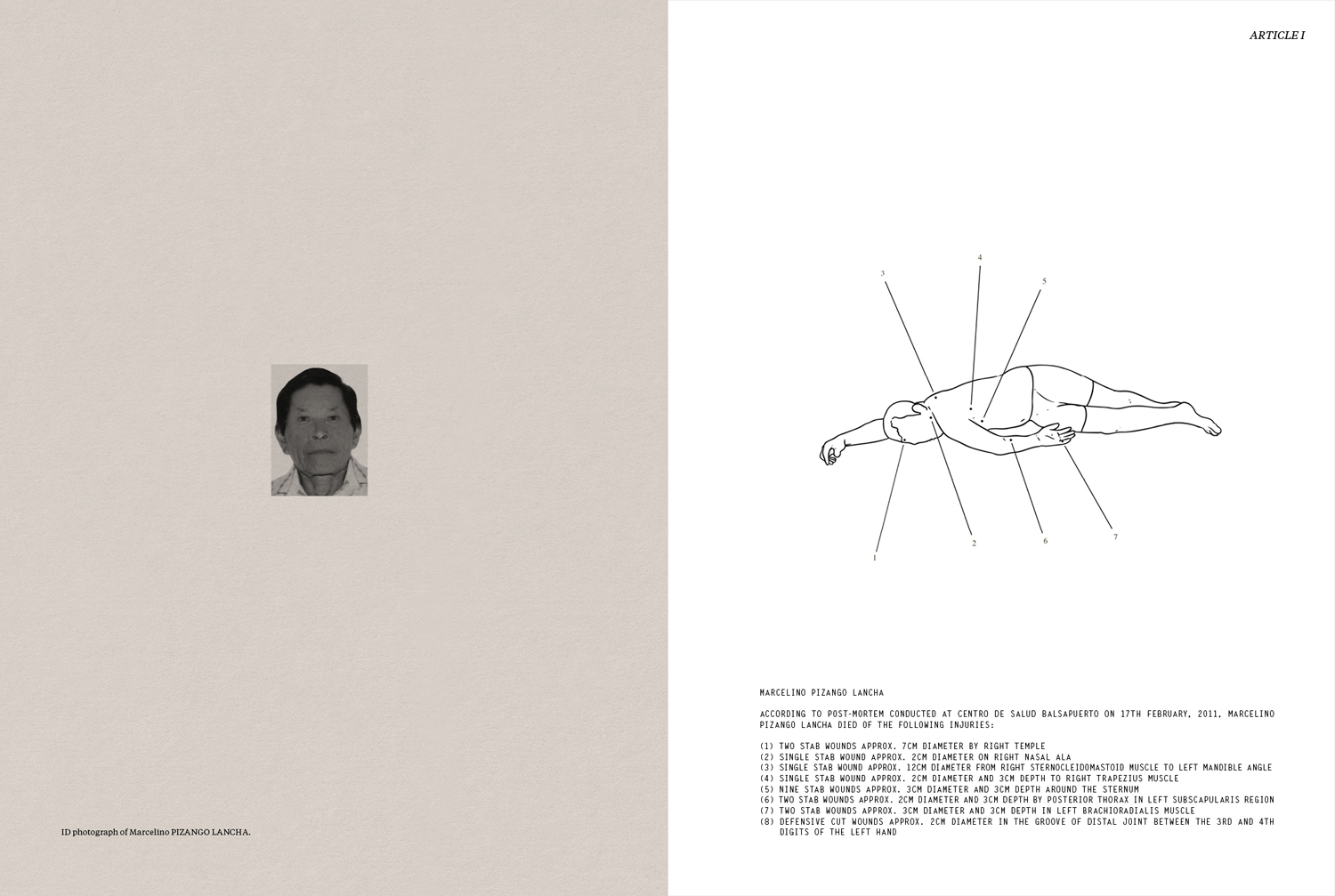
The second booklet comprises the investigation files of the murdered healers, each containing their portrait, a forensic sketch of their body at the crime scene, and related material such as official documents. Beyond being illustrative, the drawings avoid contributing to the depiction of violence. Several of these files contain nothing but the victim’s basic information (name, age, location, suspects). This informational gap hints at the bureaucratic barriers Geoghegan faced to conduct his research and subtly condemns the handling of the murders by the authorities. Oddly, these voids can be more disturbing than looking at explicit material once we read about the horrible modus operandi of the perpetrators.
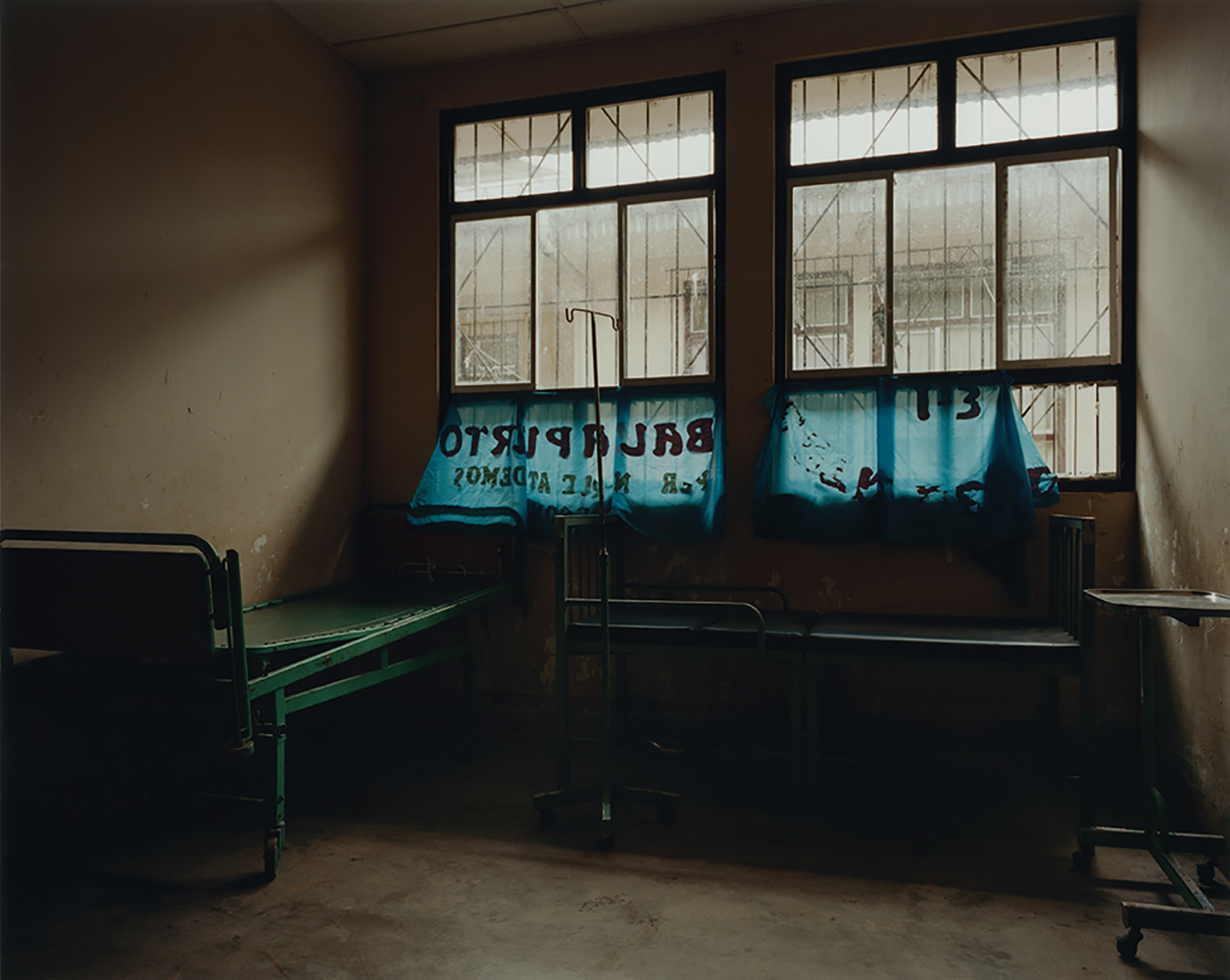
Witch Hunt – the most recent winner of the Author’s Book Award at Arles – belongs to Geoghegan’s ongoing project investigating how local beliefs, when taken for witchcraft, incite violence (an area of concern of the United Nations High Commissioner for Human Rights). This first volume concludes with an arrest warrant issued against the hunters alluded to in the title, a criminal gang led by a former mayor of Balsapuerto and his brother. Believed at some point to be the masterminds behind the fourteen murders, the reality turns out to be more complex. In some cases, the crimes were committed by family members trying to settle scores with the healers, which only stresses how contested their presence in these small towns has become.
As in the best noir films, the story closes with the narrator painfully comprehending, after a long and dangerous inquiry, that truth is elusive and justice is hardly ever served. The mayor and his gang are still at large, living in a secluded compound and protected by their community, which justifies their criminal deeds as moral adjustments against society’s evils.
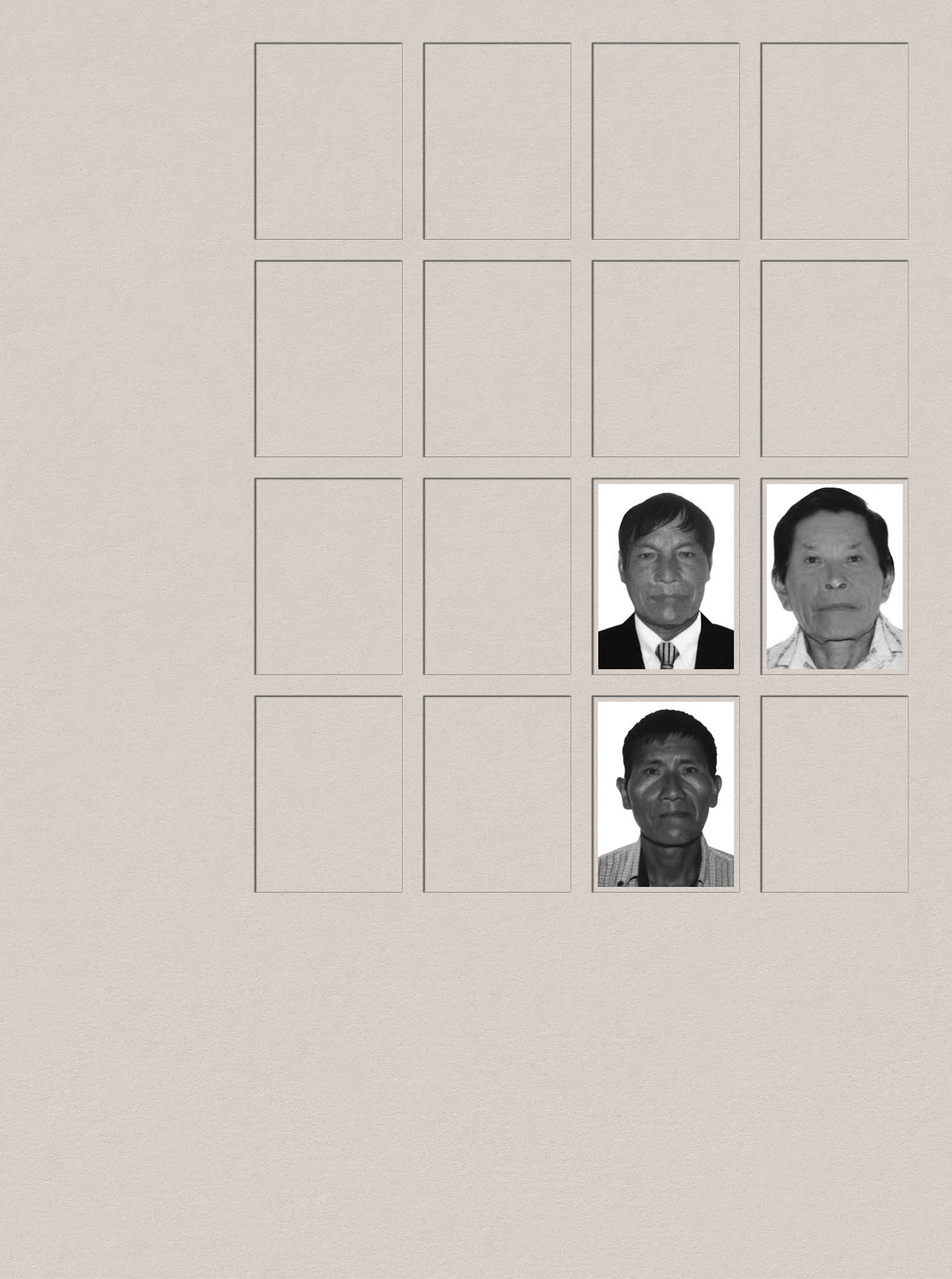
This is part of a series of reviews on Latin American photographers by Arturo Soto. Check out his other articles on Dispatches: The VII Insider Blog:
Life in a Lawless Town: Juan Orrantia’s A Machete Pelao
Messages of Angst and Hope: Notas De Voz Desde Tijuana
The Persuasions of Disobedience: Ana María Lagos
Feeling Out the Past: Graciela Iturbide’s “Heliotropo 37”
Pablo Hare: Sites of Exploitation in Peru
The Possibilities of the Actual: Adriana Lestido’s “Metropolis”
